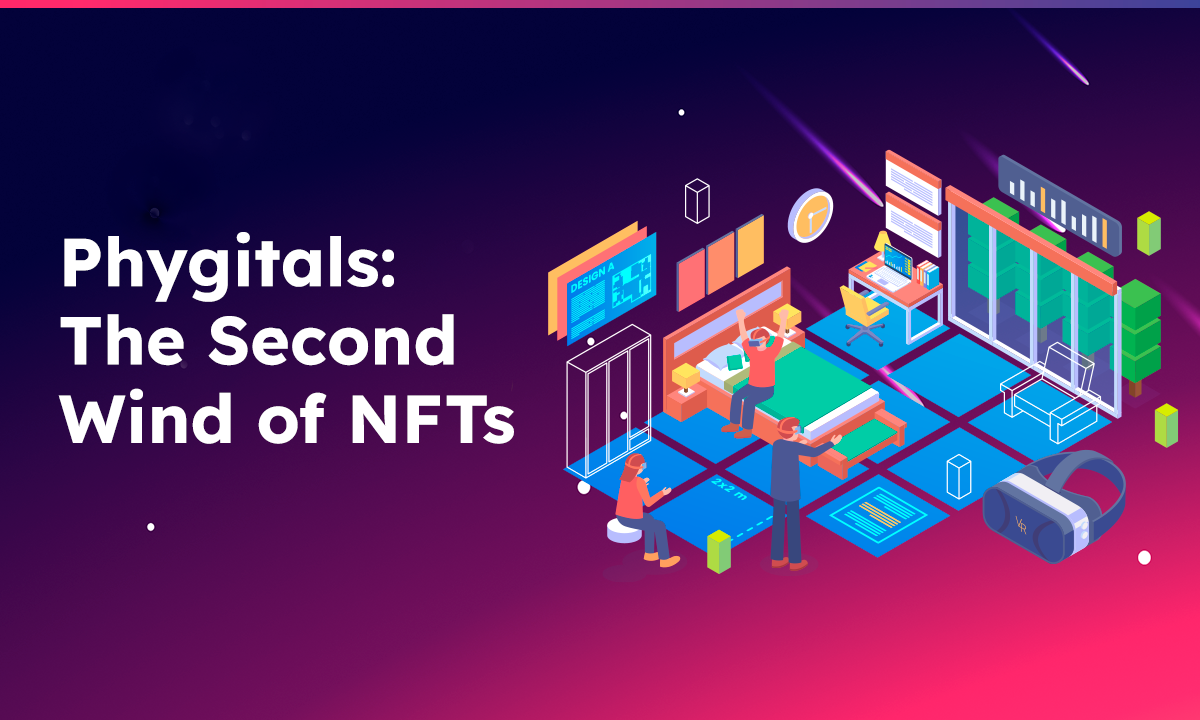
If you haven’t come across the term ‘phygitals’ yet, then here’s a crash course…
It is a combination of the words “physical” and “digital” and relates to providing consumers 2-for-1 value: if one buys a physical item, they automatically have its digital representation in the metaverse in the form of an NFT.
The way phygitals work is pretty straightforward: if a retailer has 1,000 physical T-shirts to sell, they can also have 1,000 NFTs of those T-shirts in the metaverse. A phygital product gives the physical item a digital “skin” that you can wear on your avatars in the metaverse.
Phygitals are NFTs’ second wind and could be the next crypto revolution since the physical goods are augmented in value, which makes consumers feel like they have more “bang for their buck.” The physical plus digital value proposition will bring new legitimacy to blockchain technology and attract new audiences to NFT markets.
For example, you can buy a Balenciaga hoodie in the real world and then mint the digital version to wear on your Ready Player Me avatar. Or imagine the next Billie Eilish concert you attend. The concert ticket unlocks a time-sensitive POAP (Proof Of Attendance Protocol) token that gives you 12 months’ access to her 3D space in the metaverse and an exclusive drop only for the POAP holders.
Imagine a water company like Evian creating gamified commerce incentives; anyone who returns and recycles the water bottle and scans the QR code starts earning carbon footprint reducing points that eventually lead to receiving gifts and exclusive event invites by the brand.
From a consumer perspective, this is a win-win, as they’re getting both a physical and digital version of the item they purchased, with no additional cost. Plus, they’re getting a slice of the NFT and metaverse pie, where they can join a community of like-minded people.
Phygitals will also create a way to more safely and transparently trade assets and make money on them. This fundamentally changes how we treat goods in the value they hold in the longer-term. Once redeemed, customers can use the NFT as a reward point, resell it, or even use it as collateral to get a loan.
New brands can use phygitals to reward their early adopters, and more established brands can use it as a community engagement tool by providing certain perks to those who have digital twins. We see that some big consumer brands like Pepsi are making heads turn around phygitals.
Phygitals extend the concept of ownership and agency of physical objects into the digital world. And I’m convinced that they will form the cornerstone of AR and VR experiences in the metaverse.
Bio: Batis Samadian, Founder and CEO of SPACE
The founder and CEO of SPACE, Batis Samadian, founded the company with the goal of building a fair and equal economy for creators and businesses. Previously, Batis was the product lead at Zapp in the UK and co-founded Saffron.
Batis invested in a number of successful projects, such as Emmetros and Bali Juice. Batis has been in crypto since 2013, initially mining with his college friends. Today, he brings his entrepreneurial and crypto knowledge to build the leading commerce metaverse.
About SPACE:
SPACE is a commerce virtual world that enables the creators of tomorrow to build and dream together. SPACE is on the path to enabling people to have incredible immersive commerce experiences and providing them with tools that enhance not only the community but people’s productivity in life.
Disclaimer
All the information contained on our website is published in good faith and for general information purposes only. Any action the reader takes upon the information found on our website is strictly at their own risk.
Source: https://beincrypto.com/the-second-wind-of-nfts/